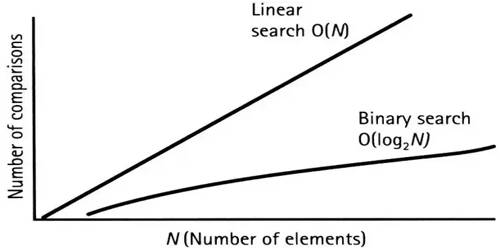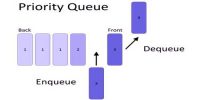Linear search and binary search are the two methods which are used in arrays for searching the elements. Linear search performs equality comparisons and Binary search performs ordering comparisons.
The differences between Linear search and Binary search are as follows:
Linear search – In a linear search, each element of an array is retrieved one by one in a logical order and checked whether it is the desired element or not.
- Linear search algorithm finds the location LOC of given ITEM of information in DATA array in efficiently.
- Linear search algorithm compares ITEM with each element of DATA one by one.
- During each stage of the search for ITEM reduce only a single element of DATA.
- In a linear search, an algorithm ITEM is first assigned to DATA [N+1]
- The complexity of a linear search algorithm is 0(n).
- Easy to use and no need for any ordered elements.
- Can be implemented on Array and Linked list.
Binary search – Binary search is an extremely efficient algorithm. This search technique consumes less time in searching the given item in minimum possible comparisons.
- Binary search algorithm finds the location LOC of given ITEM of information in DATA array efficiently.
- Binary search algorithm compares ITEM with middle clement of DATA one segment by one.
- During each stage of the search for ITEM reduce to a segment of an element of DATA.
- In a binary search, an algorithm ITEM is not required to assign in DATA [N+1].
- The complexity of Binary search algorithm is 0(log2).
- Anyhow, tricky algorithm and elements should be organized in order.
- Cannot be directly implemented on a linked list.
















